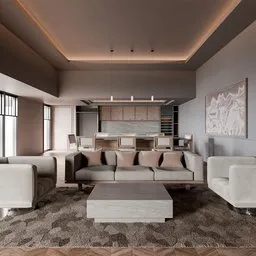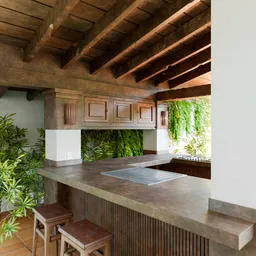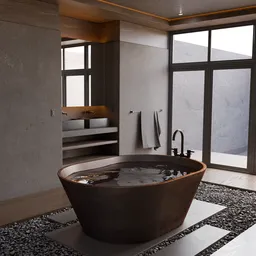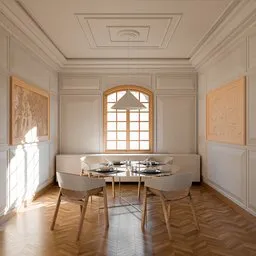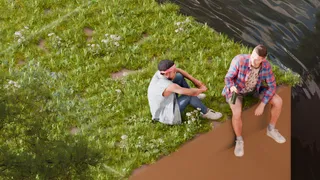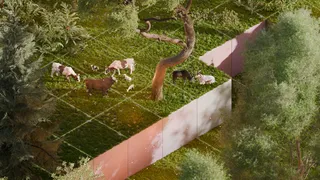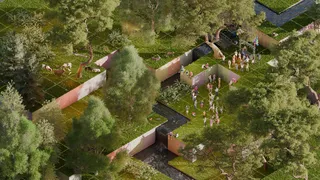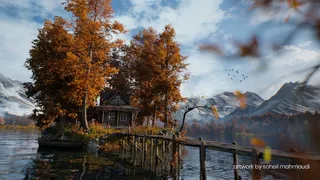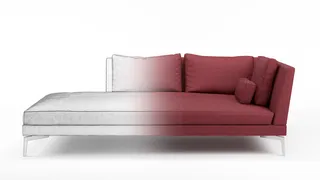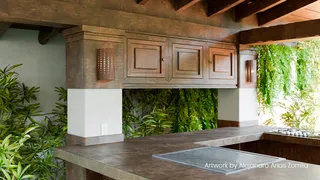
Alejandro Arias Zorrilla is an ArchViz artist who runs a rendering studio. His complex 3D scenes showcase modern interiors and exteriors with a cozy touch. In the interview, he discusses his love for architecture, ongoing projects, and future plans.
Hi Alejandro, would you please tell us a little about yourself?
I was born in Ciudad de México, México, and I currently live in Monterrey, México. Architecture runs in my family—both my grandparents, my dad, and my younger brother are all architects. I am truly passionate about architecture, and it’s something that has always been part of my life.
How did you learn 3D modeling?
I started with 3D modeling while studying architecture. I was taught the basics, but the majority of my knowledge came from external sources. What helped me the most was online resources. Everything is there, you just have to dig deep sometimes. The 3D community is very active, and lots of valuable information is accessible.
In retrospect, I should have tried more advanced 3D softwares earlier in my studies. I only did that a couple of years ago because I was hesitant about trying the advanced tools. Now, there’s no looking back as it opened a whole new world of possibilities.
What do you like about being an ArchViz artist?
I find it fascinating to turn my thoughts and ideas into something almost real. Creating renders is, in my opinion, the best tool for an architect to express what a project is about.
You also run a rendering studio. How would you describe it?
The studio is named Arzo.a, which is derived from my first and last names. It was founded in 2022. The projects I primarily work on are ArchViz and involve creating architectural still renderings. As I continue to improve, I’ve expanded into various areas, such as 3D virtual tours, motion tracking to integrate buildings or other 3D geometries, product motion graphics, and other categories outside architecture. My main goal is to define the niche that works best for me and continue growing from there.
You have uploaded to BlenderKit many 3D interior scenes. Where do you find inspiration for your designs?
My inspiration comes mostly from places I’ve visited. I constantly pay attention to my surroundings, and if something looks interesting or challenging, I take pictures and try to recreate it. When I’m not going out, I browse online architecture sites to find interesting designs and new ideas.
Generally, I’m attracted to modern styles, earthy tones, and wooden furniture because of the cozy homey feeling they give in real life.
Where do you start when you create a new scene?
I usually don’t start with a clear idea of what I want to create—I go with the flow, and ideas emerge as I work. However, this isn’t always the most effective approach, as it can lead to frustration or creative blocks.
The ideal process involves having a reference and a clear vision of the final result. For example, if I’m creating an interior scene from a reference image, I use the image as a background to get the perspective right, then start modeling. Once the base is done, I experiment with materials, geometry, and lighting.
Creating a scene from scratch takes longer, and involves hand drawing, digital drawing, 3D modeling, material as well as lighting tests. On average, a scene takes about 2 to 3 days to complete
Which scene is your favorite?
My favorite scene is the Mexican style kitchen because it was inspired by a picture I took at an Airbnb in Valle de Bravo, México. Working on it brought back memories of the time I spent there with my family. Even though the scene doesn’t exactly replicate the original space since I added my own style, vegetation, and other details, the memories made it an enjoyable personal project.
What projects are you currently working on?
I am mainly focused on architectural scenes, both interior and exterior, and try to add more detail to my work. Occasionally, I step out of my comfort zone and experiment with other types of projects. Recently, 3D sculpting has caught my interest, and I hope to create lifelike 3D animals in the future.
Do you have any suggestions for emerging 3D artists?
Start building an asset library as soon as possible. It’s like an investment—the earlier you start, the better. Having a complete asset library makes your workflow much more efficient. Although many asset packs are available online, creating your own is the best approach.
For learning resources, I recommend checking out Mir.no if you’re into ArchViz. Their work is top-tier, and using it as a reference can help you improve faster.

